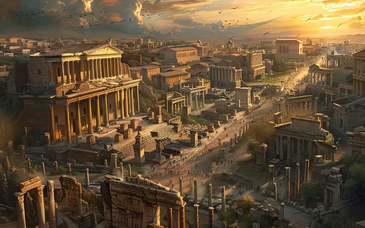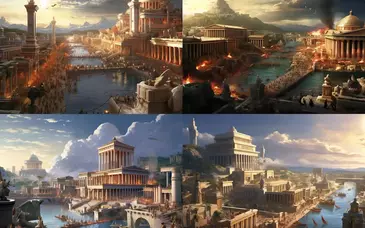In the silent corridors of time, a humble artifact stands as a testament to the valor and martial prowess of ancient Rome. Join us as we delve into the enigmatic world of a fragmented Roman helmet—a piece that once adorned the head of a Roman legionary, witnessing the tumultuous echoes of battle and the grandeur of the Roman Empire.
1. A Glimpse into the Past: The Origins of Roman Helmets: Explore the origins of Roman helmets, a crucial component of the iconic Roman military attire. From early iterations like the Montefortino to the later development of the iconic Imperial Gallic and Imperial Italic helmets, each design reflected the evolving needs and technologies of Roman warfare.
2. Crafting Mastery: The Artisan's Touch in Roman Helmet Construction: Dive into the meticulous craftsmanship involved in creating Roman helmets. Skilled artisans forged these protective headpieces from bronze, iron, and other durable materials, infusing them with not just functional strength but also aesthetic beauty.
3. Symbol of Status and Identity: Legionary Helmets and Military Ranks: Examine how Roman helmets served as more than just protective gear—they were symbols of status and identity. Different helmet designs denoted various military ranks and units, showcasing the hierarchical structure and discipline inherent in the Roman legions.
4. Battle-Tested: Traces of Wear and Tear on the Fragment: Witness the battle scars etched onto the helmet fragment. Each dent, scratch, and imperfection tells a tale of the helmet's journey through the chaos of ancient battles, offering a visceral connection to the challenges faced by the Roman soldiers who wore it.
5. Military Tactics and Warfare: Insights from the Helmet's Design: Analyze the design elements of the helmet fragment to glean insights into Roman military tactics and warfare. The strategic incorporation of cheek guards, neck protection, and distinctive crest holders reflected the Romans' commitment to adaptability and protection in the heat of battle.
6. Preservation Journey: From Antiquity to the Modern Collector: Trace the journey of the helmet fragment through time, from its original use in antiquity to its preservation in modern times. Explore the challenges and triumphs of those who sought to safeguard and showcase these fragments, ensuring their survival for contemporary admirers.
7. Museums and Exhibitions: Where the Fragment Comes to Life: Discover where these fragments come to life for modern audiences—in museums and exhibitions dedicated to preserving and displaying the artifacts of ancient Rome. Explore the immersive experiences that bring the world of Roman warfare to vivid reality.
In the singular piece of a Roman helmet, we find a tangible link to a bygone era—a piece that once echoed with the clashing of swords and the commands of legionary leaders. As we unravel the layers of history encapsulated in this fragment, we glimpse the resilience, discipline, and martial glory of the Roman Empire, leaving us with a profound appreciation for the enduring legacy of those who wore these helmets into the pages of history.

